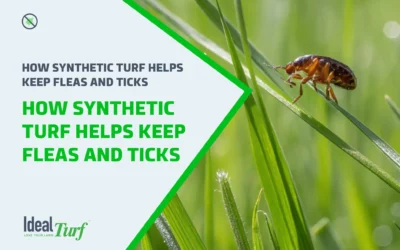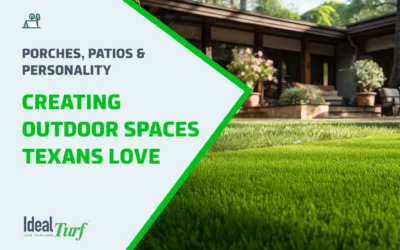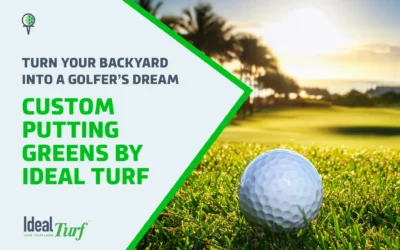What Is Turf Drainage & How Does It Work?
Artificial turf drainage systems are primarily designed to allow water to percolate through the backing of the turf and drain through the base layer into the water table. With the exception of artificial turf putting greens, the most common artificial grass backing is “hole-punched” or perforated. The other type of backing is 100% permeable or non-perforated that’s commonly used in pet turf applications or areas where maximum drainage is required.
If a synthetic turf product does not allow substances to quickly pass through the material and into the sub-base, bacteria can build up causing unpleasant odors. To help prevent this, our pet-friendly turf products have our proprietary Microbe-Safe™ antimicrobial agents built into the backing.
Proper Artificial Turf Base and Preparation Matters for Drainage
We recommend and install no less than 3” of Class II Road Base on every artificial grass installation we complete. Class II Road Base is a combination of larger and smaller crushed and decomposed granite, ensuring the best drainage possible. As a general rule of thumb, the larger the base material, the better the drainage.
Below is an overview of the two drainage systems you’ll find on our turf products. First is our DUAL FLOW Backing System, and second is Hole-Punch Backing.
DUAL FLOW Turf Drainage
Ideal Turf’s hybrid artificial turf drainage technology improves the drainage efficiency of synthetic turf by combining the 100% permeable and hole-punched backing. We call it our “DUAL FLOW” backing system and it drains water at an industry-leading 2,000+ inches per hour!
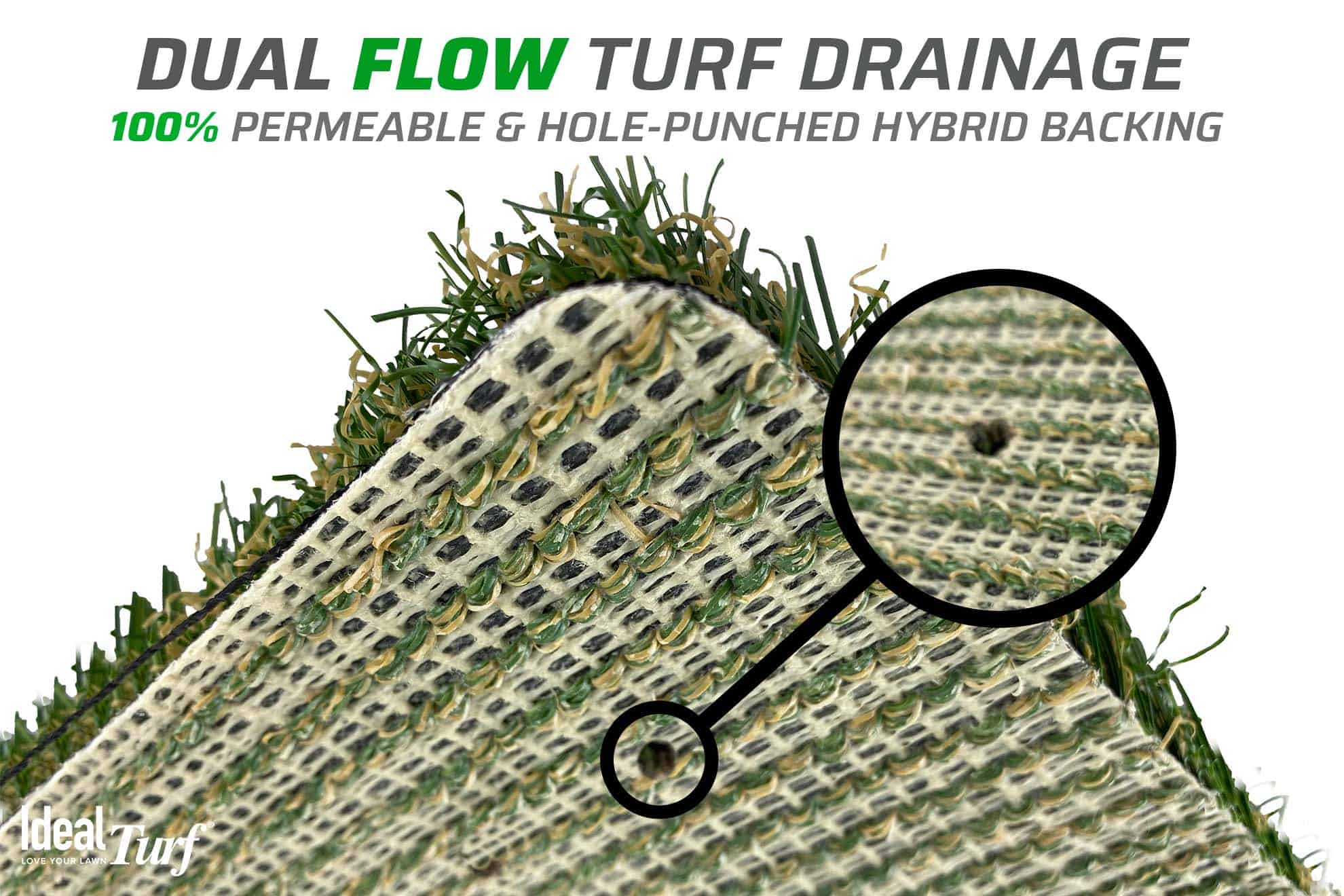
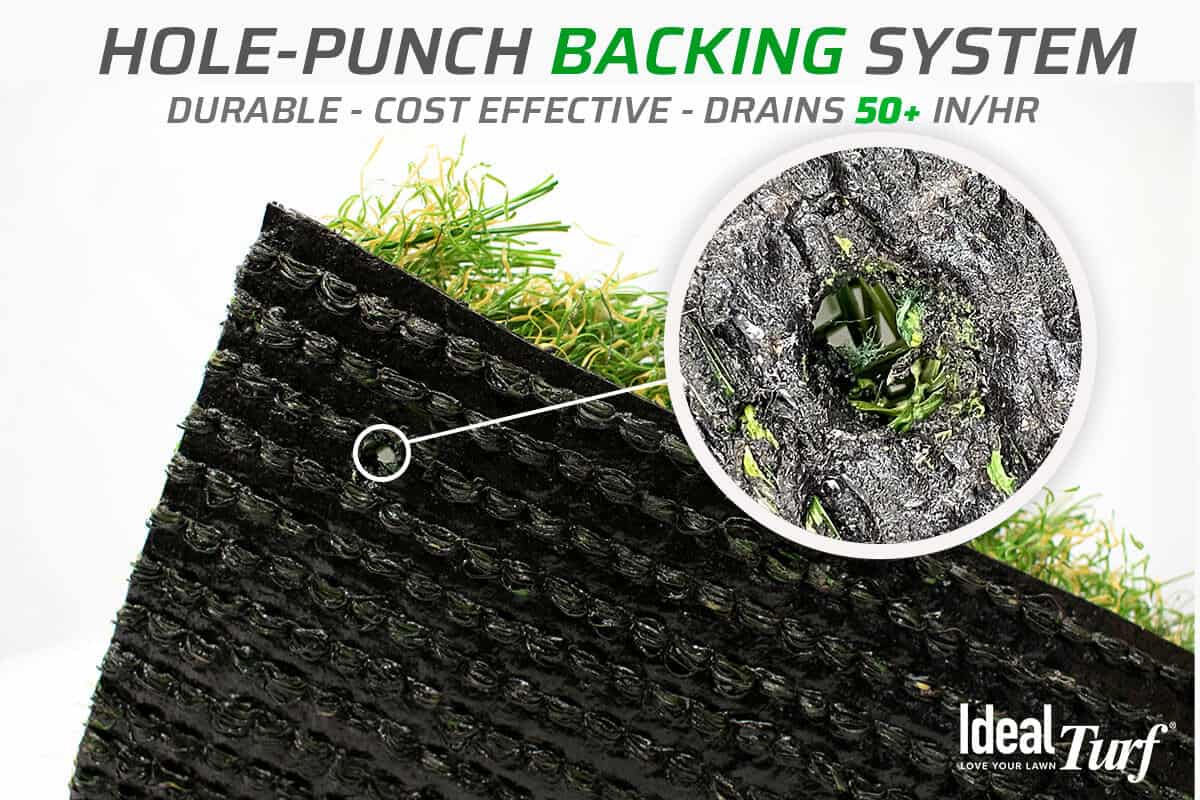
Hole-Punch Turf Drainage
The most common type of backing found on artificial grass is “Hole-Punched” backing. This type of turf drainage consists of small holes punched every 4” – 6” in the turf’s backing. These holes allow water to easily flow through the turf, into the sub-base, and eventually into the soil below.
